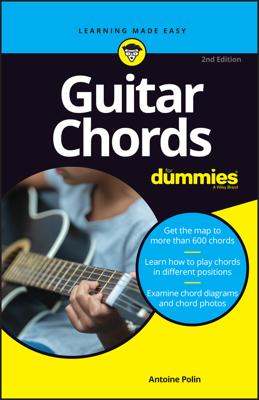Unlike open-position guitar chords, barre chords can move all around the neck of your guitar. A movable barre chord contains no open strings — only fretted notes. You can slide these fretted notes up or down the neck to different positions to produce other chords of the same quality.
The standard A major barre chord
One of the most useful movable barre chords is the one based on the open A chord. They get their names from the note you play on the 5th (A) string. Note that though they are very similar, the A-based barre chords are more difficult to play than their E-based cousins.
As you play a barre (“bar”), one of your left-hand fingers (usually the index) presses down all or most of the strings at a certain fret, enabling the remaining fingers to play a chord form immediately above the barre finger. Think of your barre finger as a movable nut or capo and your remaining fingers as playing certain open-position chord forms directly above it.
Finger an open A chord, but instead of using the normal fingering of 1-2-3, use 2-3-4.
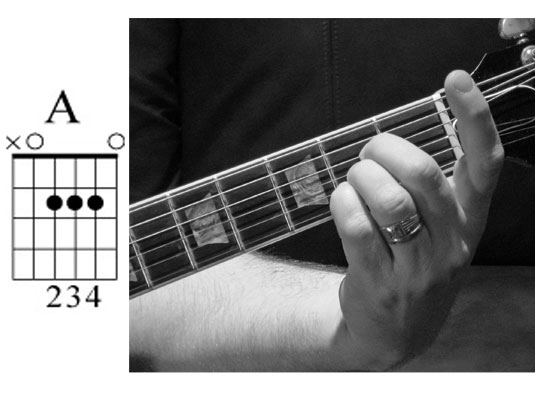
This fingering leaves your index finger free and ready to act as the barre finger.
Lay your first finger down across all six strings, just behind the nut (on the tuning peg side).
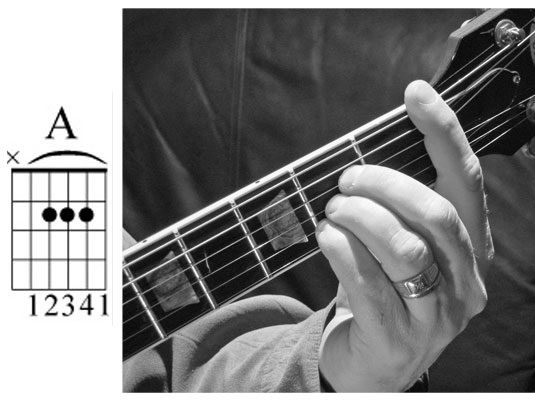
Because you strum only the top five strings for A-based barre chords, you could lay your finger down across just five strings. But most guitarists cover all six strings with the barre because it feels more comfortable and prevents the 6th string from accidentally sounding.
Take the entire left-hand shape and slide it up one fret so that your first finger barres the first fret, producing a Bb chord.
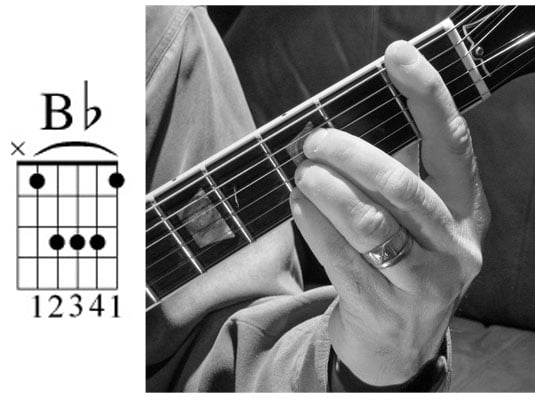
After you finger the Bb chord, try playing the notes of the chord one string at a time (from the 5th string to the 1st) to see whether all the notes ring out clearly. If you encounter any muffled notes, check to see that your left-hand fingers are touching only the appropriate strings and aren’t preventing adjacent ones from ringing. If the sound is still muted, you need to press the strings down harder.
Because you can play a Bb chord as a barre chord, you can now, through the miracle of movable chords, play every major chord — all 12 of them — simply by moving up the neck. To determine the name of each chord, you simply have to know what note name you’re playing on the 5th (A) string.
Alternative fingerings
Now that you know the standard fingering for playing A-based major barre chords, you should know that most guitarists don’t use the standard fingering. Take a look at the following figure to see another way to finger this chord (using the Bb chord at the first fret as an example). Use your ring finger to barre the three notes at the third fret.
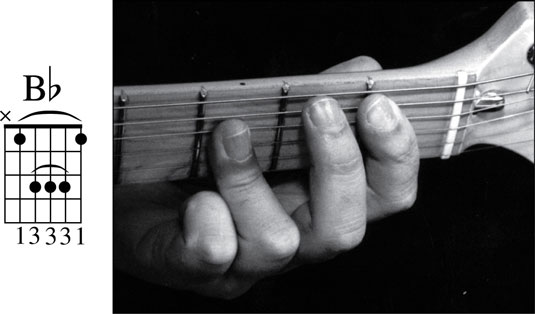
The tricky thing about fingering the A-based major barre chords this way is that, for the 1st string to ring, you need to engage in a mean contortion with your third finger, elevating the middle knuckle out of the way. Like wiggling your ears, some people can do it and some can’t. The people who can’t (lift their finger, not wiggle their ears) can use another fingering pattern.
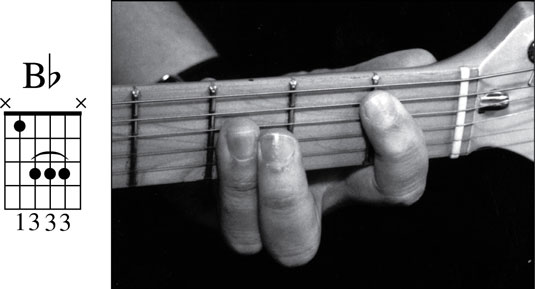
If you play the Bb barre chord as shown, make sure that the 1st string doesn’t accidentally sound. To keep the 1st string quiet, either avoid striking it with your right hand or mute it (deaden it by lightly touching it) with the third finger.
Experiment with all three fingerings and pick (pun intended!) the one that feels best for you.

